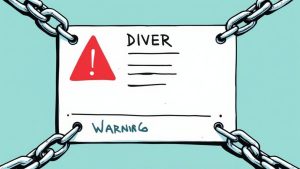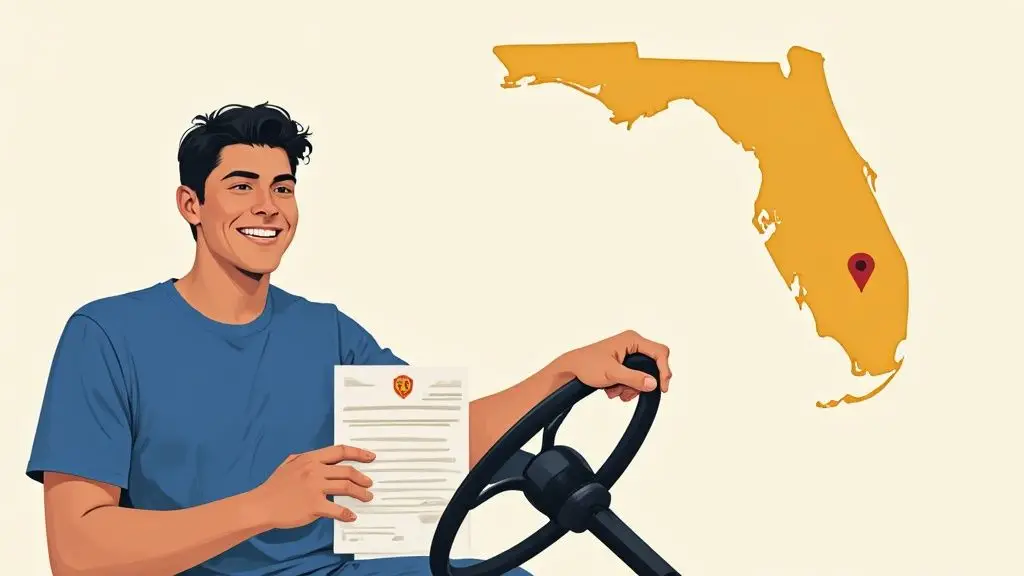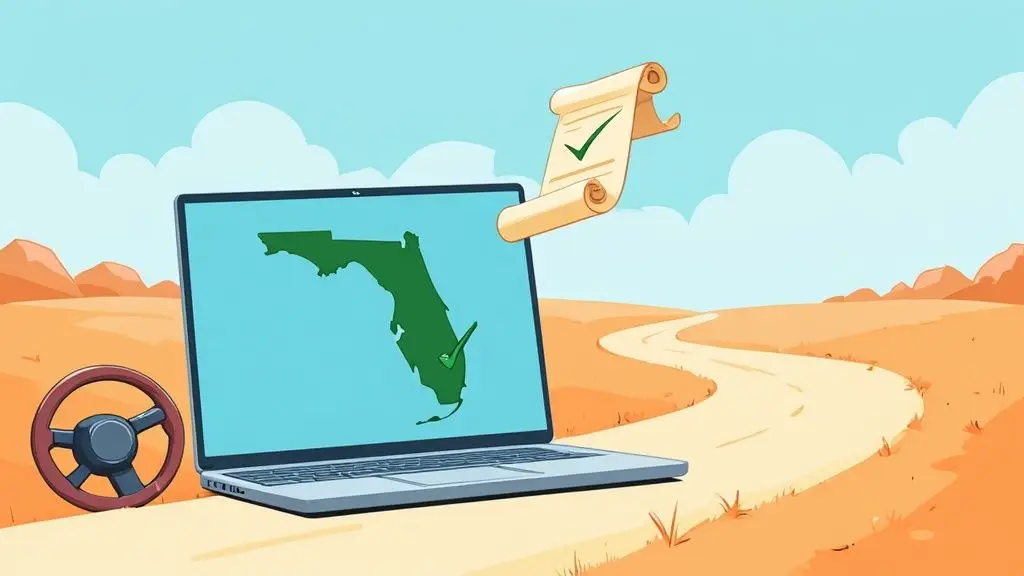Have you ever wondered how many points on your license lead to a suspension? A common number you might hear is 12 points within a 12-month period. However, this is not a universal rule.
The exact number of points to suspend license status varies greatly by state. Each state has its own system for counting points. Therefore, it is very important to know the rules where you live.
How Driver License Points Can Lead to a Suspension
Think of your driving record as a report card. When you get a ticket for a moving violation, points are added to your record. This helps the state track your driving behavior. For instance, violations like speeding or running a red light will add points.
If you get too many points in a certain amount of time, the state may see you as a high-risk driver. As a result, this can lead to penalties. The most serious penalty is having your license suspended.
For example, California uses a layered system. Your license can be suspended if you get 4 points in 12 months. It can also be suspended for 6 points in 24 months, or 8 points in 36 months. This shows that both the number of points and the timeframe are very important. The California Department of Motor Vehicles provides a full guide on their official website.
A Quick Look at Different State Point Systems
It is helpful to see how different states manage driver license points. The rules can be very different from one place to another. Because of this, you should always check the specific rules for the state where you drive. The Governors Highway Safety Association (GHSA) offers a great resource for finding state highway safety offices.
Here is a simple table to show some of these differences:
State License Suspension Point Thresholds at a Glance
| State | Points for Suspension | Timeframe |
|---|---|---|
| Florida | 12 points | 12 months |
| California | 4 points | 12 months |
| New York | 11 points | 18 months |
| Texas | 6 points | 36 months |
| Georgia | 15 points | 24 months |
As you can see, there is no single rule for every state. A driver in Texas has a different point limit than a driver in New York.
The Path to a Suspended License
The journey from a clean record to a suspended license has several steps. This visual helps explain the process.
This chart shows that reaching 12 points is often the trigger for a license suspension. It also shows that points can expire after a couple of years if you maintain a clean driving record.
Understanding the Florida Driver’s License Point System

So, how does the driver’s license point system work? You can think of it as a way to score your driving. The Florida Highway Safety and Motor Vehicles (FLHSMV) uses this system to keep track of traffic tickets. It also helps identify drivers who might be taking too many risks on the road.
The process is simple. When you are found guilty of a moving violation, points are added to your driving record. The main goal is not just to punish drivers. Instead, it aims to encourage safer driving for everyone.
How Points Add Up on Your Record
Different traffic violations have different point values. The point system reflects the seriousness of each violation. A small mistake is not treated the same as a very dangerous action.
Here is a general breakdown of how it works in Florida:
- Minor Violations: Things like a minor speeding ticket (less than 15 mph over the limit) typically add 3 points.
- Serious Violations: More dangerous actions, such as speeding more than 15 mph over the limit, will give you 4 points.
- Major Offenses: The most serious violations, like leaving the scene of a collision with injuries, can result in 6 points. This may also lead to an immediate license suspension.
These points stay on your record. If you reach a certain total in a specific time, you will face a suspension. This is why knowing your state’s rules is so important for keeping your driving privileges. You can learn more about Florida’s point system on the FLHSMV website.
Remember, the point system is about accountability. It is a clear way to show that your actions have consequences, which helps keep our roads safe.
Ultimately, the goal is to encourage all drivers to be more careful and responsible.
The Real-World Consequences of a Suspended License

Getting too many points on your driver’s license is more than just a number. Those points can cause real problems in your daily life.
First, you lose your ability to drive legally. Suddenly, simple tasks become very difficult. For example, getting to work or school can become a major challenge.
But the problems do not end there. A license suspension often brings financial stress. You will likely have to pay large fines to the court. You will also have to pay separate fees to get your license back. These costs can add up quickly.
The Financial Impact of a Suspension
Beyond the initial costs, a suspension is a big warning sign to insurance companies. They see it as proof of risky driving. As a result, your insurance costs will almost certainly increase. This is not just a short-term problem. You could pay higher rates for three to five years.
Your job could also be at risk. Many jobs require a valid driver’s license, even if driving is not the main part of your work. If your job involves sales, deliveries, or travel between locations, a suspension could lead to being fired. This shows a direct link between traffic points and your financial well-being.
Long-Term Effects on Your Life
The effects of a suspended license can last for a long time. It can make it much harder to find a new job. This is especially true for any role that requires a clean driving record. The National Highway Traffic Safety Administration (NHTSA) offers resources on the costs of unsafe driving, which you can find on their website.
Think of your driving record as a sign of your responsibility. When it is damaged by a suspension, it can create obstacles. It is a clear reminder that driver license points are a serious matter that can change your life.
How Does a Driver’s License Point System Actually Work?

To better understand how these point systems work, it helps to look at a real example. Talking about points and tickets can be abstract. Seeing how a specific state manages its system makes it much clearer.
Let’s look at North Dakota as an example. Their system is a great model of how states use points. They not only penalize unsafe driving but also encourage people to become safer drivers.
Reaching the Limit: Point Thresholds and Suspensions
North Dakota, like other states, has a specific point limit. If you reach that number, your license gets suspended. They have clear rules on how many points it takes to suspend a license. These limits are different for drivers of different ages.
For adult drivers in North Dakota, the limit is 12 points. When you reach that total, your license is suspended. The length of the suspension also increases with more points. It is 7 days for each point over 11.
This system creates a very clear relationship between actions and consequences. The more violations you have, the more serious the penalty. This directly reflects the level of risk the state believes you present on the road.
Stricter Rules for Younger Drivers
It is a known fact that new and teenage drivers are more likely to be in traffic incidents. Because of this, states like North Dakota have stricter rules for them. The system is less forgiving for young drivers’ mistakes. The NHTSA provides extensive data on teen driving safety.
For drivers under 18, the point limit is much lower. Their license is cancelled if they get just 6 points. This is a safety measure. It is designed to step in early and help build good driving habits before unsafe patterns develop.
Earning Your Way Back: Reducing Your Points
The good news is that these systems are not only about punishment. They almost always offer ways for drivers to improve their records. North Dakota provides a couple of ways to lower your point total.
One way is to take a defensive driving course. By completing an approved course, you can remove 3 points from your record.
Another way is through consistent good behavior. The system rewards safe driving over time. For every three months you drive without a ticket, 1 point is automatically removed from your record. You can find the full details on North Dakota’s point reduction schedule on their official government website.
Why Point Systems Are a Key to Road Safety
Have you ever wondered why states use a point system for driver’s licenses? The reason is quite simple. It is all about making our roads safer for everyone. The system works as an early warning. It helps identify risky driving habits before they lead to a serious collision.
Let’s be honest, the threat of losing your license is a powerful motivator. It makes you think twice before speeding or ignoring a stop sign. The goal is not just punishment. It is about prevention and encouraging all of us to be more careful drivers.
A Proven Tool for Public Safety
This is not just a theory. Point systems have a history of making a real difference. For example, when Spain introduced a point-based system in 2006, the country saw a significant decrease in traffic-related deaths and incidents.
One study found an overall 21% reduction in collisions after the system was put in place. This is a huge impact. It proves these programs can change driver behavior. The same study also noted that the benefits began to level off after about seven years. This tells us that ongoing public education is important for long-term success. You can read the full research about these safety findings to see the data.
Encouraging a Culture of Responsibility
Ultimately, a driver license point system is a tool for accountability. It creates a clear connection between your actions on the road and the real consequence of a license suspension.
This type of system helps build a culture where safe driving is the norm. It serves as a constant reminder that driving is a shared responsibility. Following the rules is not just about protecting your license. It is about protecting everyone in our community. The Federal Highway Administration (FHWA) promotes a “Safe System Approach” that you can learn about on their safety website.
Common Questions About License Points and Suspension
Understanding the driver’s license point system can feel complicated. You know the rules are important, but the details can be confusing. Let’s answer some of the most common questions drivers have about points and suspensions.
How do points affect my insurance rates?
Points on your driving record are a major red flag for insurance companies. They see points as a sign of risky driving behavior. As a result, having more points usually leads to higher insurance premiums. Even a single ticket can cause your rates to go up for several years.
Do defensive driving classes remove points?
This depends on your state’s laws. In some states, completing a state-approved defensive driving or driver improvement course can remove points from your record. In other states, it may prevent points from being added for a specific ticket. Always check your state’s official DMV or DOT website for the specific rules that apply to you.
What should I do after a minor collision?
First, move your vehicle to a safe location if possible. Then, check if anyone is injured and call 911 if needed. Exchange information with the other driver, including names, contact details, and insurance information. Finally, report the incident to the police and your insurance company.
How long do points stay on my record?
The duration varies by state. In many states, points from a traffic ticket will stay on your driving record for two to three years. For example, in Florida, points remain for 36 months. However, the violation itself may be visible to insurance companies for longer, often up to five years.
Do out-of-state tickets add points to my license?
Yes, they usually do. Most states share information about traffic violations through agreements like the Driver License Compact. If you get a ticket in another state, that state will likely report it to your home state’s DMV. Your home state will then add points to your license according to its own rules.
Where can I find my state’s official driving rules?
The best place to find your state’s official driving rules is on the website for its Department of Motor Vehicles (DMV), Department of Transportation (DOT), or equivalent agency. These .gov websites provide the most accurate and up-to-date driver handbooks and legal information.





